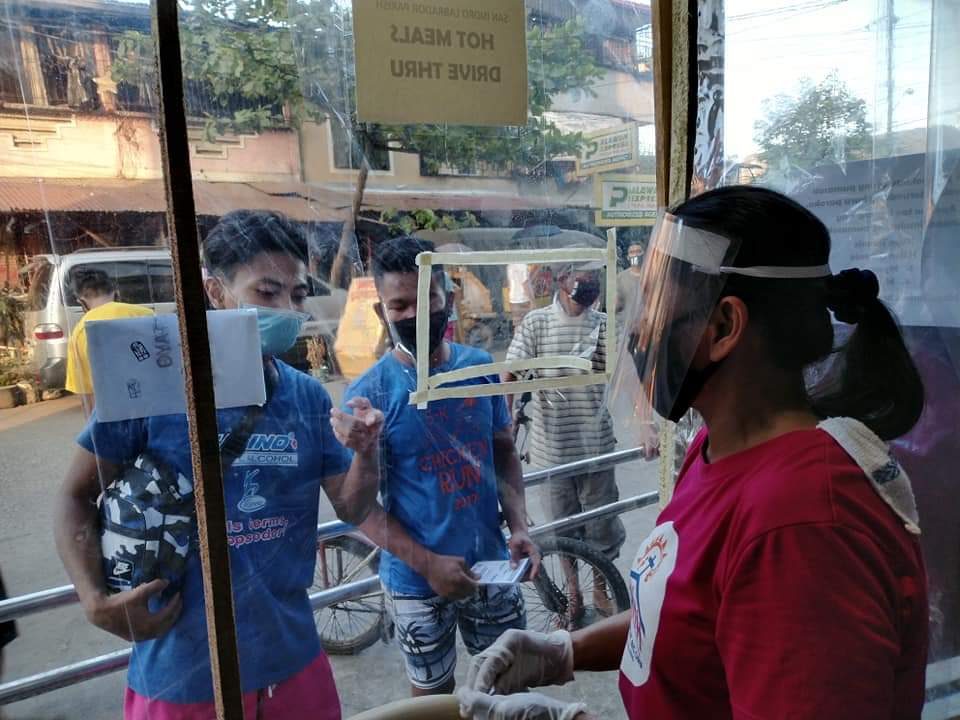SUMMARY
This is AI generated summarization, which may have errors. For context, always refer to the full article.

ALBAY, Philippines – Across the Philippines, several safety measures have been put in place to help protect crowded settlements and public spaces from the coronavirus outbreak.
These include setting up portable washing stations and using acetate as improvised plastic barriers both from local government and non-government groups among others.
Regene Palma, an urban planner who is currently finishing her Master’s degree at the University of Westminster, shared ideas on how local governments can maximize such measures and some more ways to help informal settlers brace for this pandemic via spatial organization.
Spatial organization tips
According to Palma, one way to help protect crowded communities during this outbreak is to identify entrance and exit points and connecting narrow alleys.
These are where wash stations can be placed, alongside reminders about health and sanitation, since these are spaces with high foot traffic.
These wash stations can be set up using drums, which can serve either as refillable containers or catchment.
Moreover, she said local governments can set up temporary shelters in common areas such as sports courts, small squares, or parking lots.
Alternative shelters can help decrease the number of families within a home and make them practice physical distancing. These can serve as additional community isolation areas as well.
Acetate or plastic walls, especially in sari-sari stores, can also encourage physical distancing and help provide added protection to the vendor and the seller.
Due to the restrictions posed by the community quarantine, food security has become a challenge. Unused micro spaces are good spaces for planting fast-growing edible plants and can be a good practice in the long run, Palma said. (READ: Going zero waste during a pandemic? These advocates say it’s possible)
She added the drums can be reused for tower gardens; greens can be hung on existing buildings; facilities can double as compost areas; and seedlings can be grown in used plastic containers.
Limitations and opportunities
Palma emphasized these are only guidelines, with the protection of communities likely to vary from place to place.
She added that while local community leaders have stepped up in innovating with whatever resources they have to best implement physical distancing, poor families in crowded communities can cope with the outbreak with support from the government.
According to her, social safety nets, equipment, and funding support for local governments can empower them to take care of their constituents and not put additional strain on them.
In Philippine Statistics Authority’s 2015 Census of Population, the country’s urban population is approximately 51.73 million. This means more than half of the total Philippine population reside in urban centers.
Regions within and adjacent to Metro Manila have gradually grown in the past two decades as well.
These urbanization phenomena have led to a host of problems, from infrastructure to health, to name a few. Yet cities are also the growth drivers of most economies.
In 2008, the World Health Organization’s Commission on Social Determinants of Health elicited evidence that inequities in health are the consequences of conditions in which people grow, live, work, and age.
Palma’s suggestions highlight how urban density is not the problem, but rather the lack of interventions and government capacities to manage the quality of that density.
Palma said urban city dwellers can tell of health equity issues by asking questions like, “Are there benches if you get tired?” “If you need to relieve yourself, are there public toilets?” “If you’re worried about the virus, where would you wash your hands?”
Public amenities are usually not available, as most of us have to get inside a cafe to sit down, use the toilet in a fastfood chain, she said.
For public health expert Andrew Lee who had briefly worked with an ad agency in Leyte following Super Typhoon Yolanda, urban design is important as population density is a risk factor for infectious disease spread and outbreaks, not just for the coronavirus disease.
“Real game changing power of primary care is through prevention, health promotion and local coordination of health and social care, and not the minor ailments that currently make up a lot of our workload,” said Lee. – Rappler.com
Add a comment
How does this make you feel?
There are no comments yet. Add your comment to start the conversation.